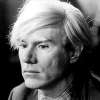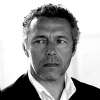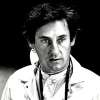Pop
Art
Discover art for sale. Buy and sell Pop Art prints & editions online. Pop Art emerged in 1950s America and Britain, bringing mass media and consumer culture into the realm of high art.
Art for sale
Movement Overview
Pop Art, short for ‘popular art’, celebrates everything recognisable and mainstream. In the 1960s, artists like Andy Warhol and Roy Lichtenstein featured mass-produced Coca-Cola bottles, Campbell’s soup cans and comic books in their work, often using industrial techniques like screen-printing. Today, Japanese artist Takashi Murakami finds inspiration in Japan’s thriving ‘otaku’ (geek) culture, while American artist KAWS gives a twist on popular characters like The Simpsons and the Smurfs in his art.
Pop Art began as an art movement in America and Britain in the 1950s, developing into its most prolific period in the 1960s. Going into the 1960s and 70s, many other cultures and countries had a significant part to play in the Pop Art movement. Pop Art reacted directly against traditional notions of what art could be by blurring the lines between high and low culture, and art and life. Primarily using material from popular and commercial Western culture, Pop Art aimed to reflect the world as we know it, and has come to be one of the most recognisable genres of Modern Art.
The renowned British Pop artist Richard Hamilton in 1957 noted what he considered to be the ‘characteristics of pop art’ in a letter to his friends: ‘Pop Art is: Popular (designed for a mass audience), Transient (short-term solution), Expendable (easily forgotten), Low cost, Mass produced, Young (aimed at Youth), Witty, Sexy, Gimmicky, Glamorous, Big business.’
Pop Art encompasses a diverse body of work, but what unites the movement is its challenge to the dominance of abstraction in the mid-20th century. Also recognisable across the Pop Art movement is its play on visual tropes from the mass media like saturated colour palettes, simplified shapes and the mechanical reproduction of images. Andy Warhol’s iconic Campbell’s Soup series captures the essence of Pop Art. This famous group of works acknowledges the commodification of art by taking the label of a Campbell’s Soup can directly from consumer culture, flattening it into block colours and obsessively reproducing variations on the same subject.
American pop vs. British pop
Despite sharing subject matter and wider political aims, American Pop Art is largely viewed as distinct from its counterpart in Britain. Pop Art in Britain was influenced from afar by mass-media and popular culture in America, while the cult of celebrity and the ‘American Dream’ that dominated everyday life in the United States directly inspired artists living there. Subsequently, British Pop is more academic, using irony and parody through the appropriation of popular imagery. American Pop on the other hand emphasises the mundanity of mass media to reject the emotive, visual language of Abstract Expressionism.
Some of the most famous Pop artists in the world are Andy Warhol, Roy Lichtenstein, Richard Hamilton and David Hockney.
Synonymous with the Pop Art movement itself are Andy Warhol’s paintings of Marilyn Monroe, first created after the actor died in 1962. Changing the course of art history, Warhol’s series of Marilyn paintings were indicative of the artist’s infatuation with celebrity culture and his subsequent willingness to self-publicise. Hitting on the darker side of fame by publishing these works immediately following Monroe’s death, Warhol points to the thin veneer of glamour that celebrity images portray in the mass-media.
Key to the revolutionary nature of the Pop Art movement was the techniques and processes used to create the works. Questioning the elitism of traditional fine art painting, Pop artists in America like Warhol and Lichtenstein created a new visual language for the masses through the appropriation of design industry techniques and processes. This included the mechanical-like reproduction of images through commercial screen printing.
Additionally, collage was one of the first techniques used in the Pop Art movement in Britain. Artists like Peter Blake & Richard Hamilton used images cut or ripped from advertisements, magazines, and newspapers to simultaneously juxtapose, elevate and criticise mass-produced objects and media.
Pop Art has transformed art as we know it, continuing to influence artists into the present day. Indeed, Andy Warhol continued to dominate the New York art world until the 1980s and has influenced many artists working today such as Damien Hirst. The work of Jeff Koons and Takashi Murakami are amongst those who comprise the Neo-Pop movement in the present day, continuing to blur the lines between high and low art by using techniques of appropriation and engaging with contemporary mass-media in unique ways.
Pop artworks constitute some of the most distinguishable lots on the market and in the last ten years, Pop artists have consistently beat estimates at auction. Notably Warhol’s Silver Car Crash (Double Disaster) (1963), sold for a record breaking $105 million at Sotheby’s in 2013, and Roy Lichtenstein’s Nude With Joyous Painting (1994) sold for $46.2 million at Christie’s in New York in 2020. In March 2021, Warhol’s Endangered Species screen prints sold for over five times its upper estimate, for £2.9 million.
At the same time, the Pop art market is an accessible market for new collectors, with works selling at a range of price points. This is by no means coincidental to Pop Art’s origins in mass production that has allowed for a plethora of signed prints and editions to be made available on the secondary market.
We connect buyers and sellers of original contemporary and modern prints, facilitating discreet, independent, investment led private sales. Fixed, clear and mutually agreed upon between both parties - simple, safe and secure.
MyArtBroker, 55-56 Russell Square, London WC1B 4HP (by appointment only)
875 Washington St, New York, NY 10014, United States (by appointment only)
- © 2025 MyArtBroker. All rights reserved.
- Privacy Policy
- Cookie policy
- Website terms of use
- Terms and conditions






